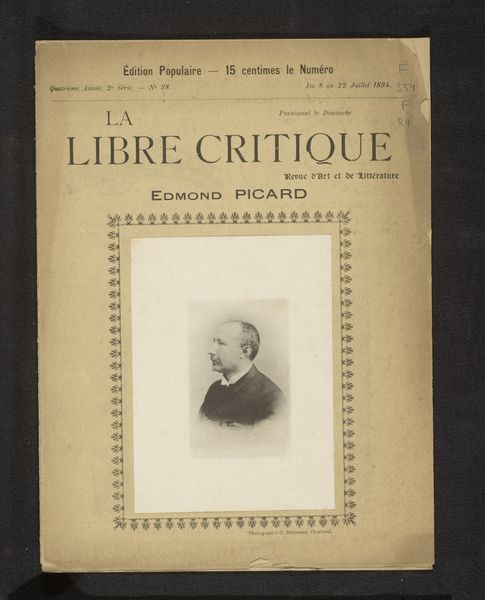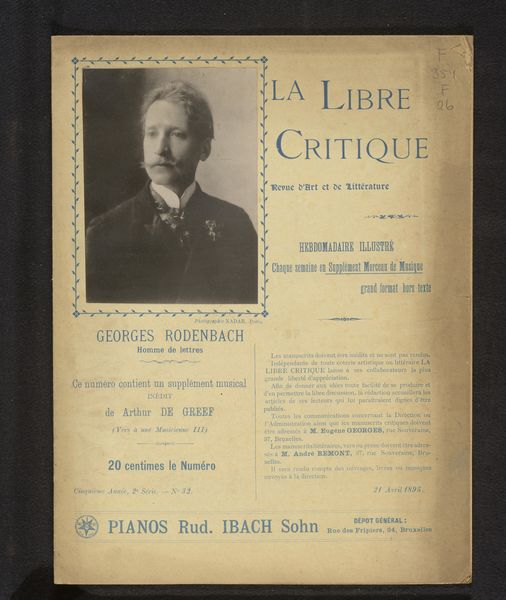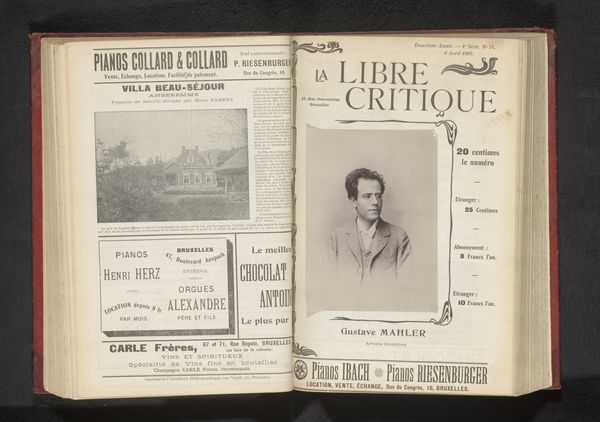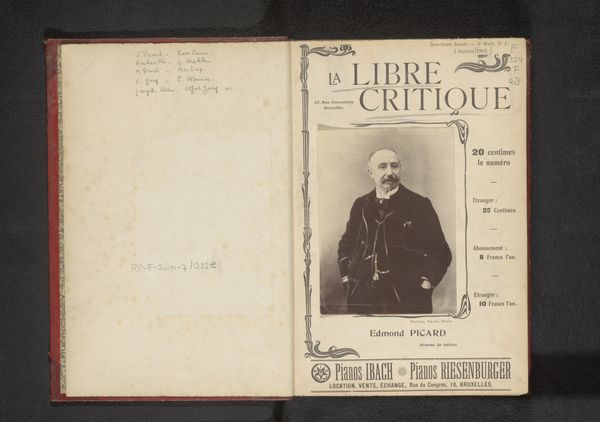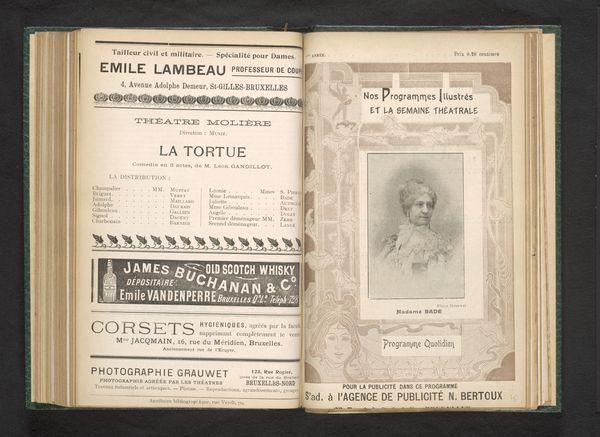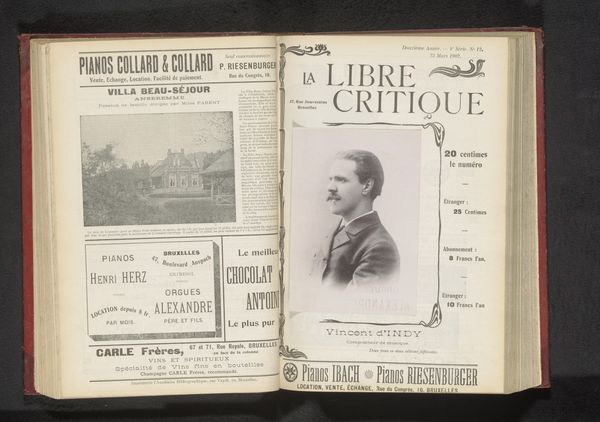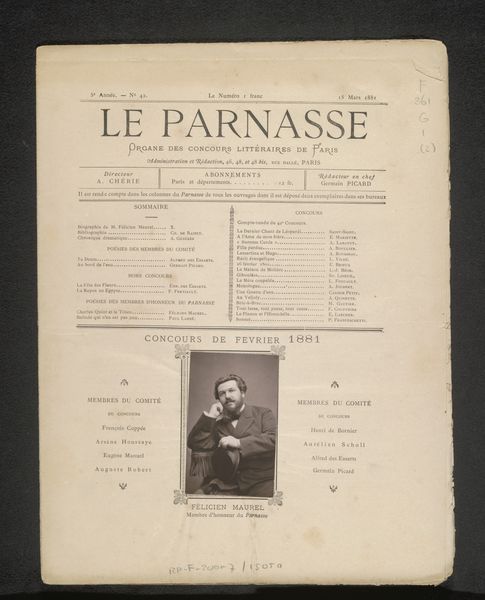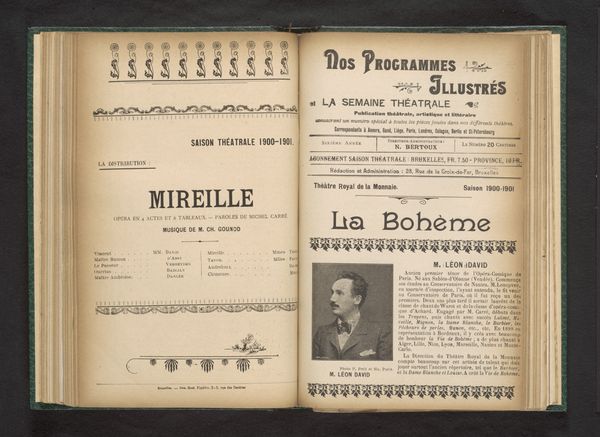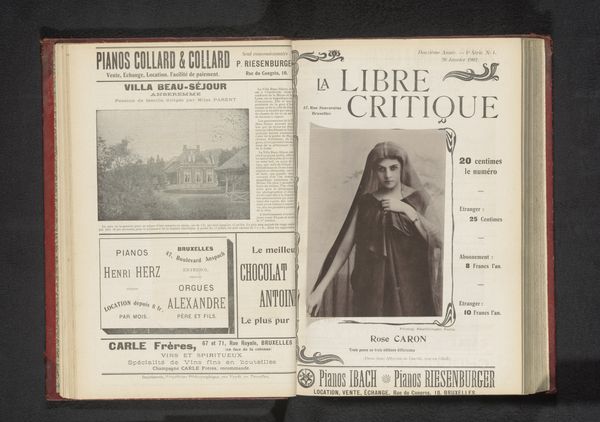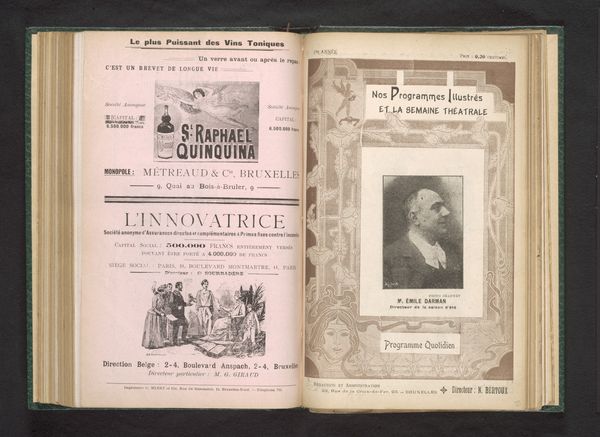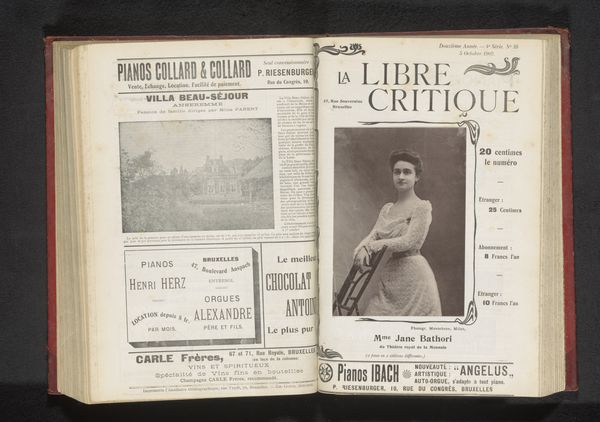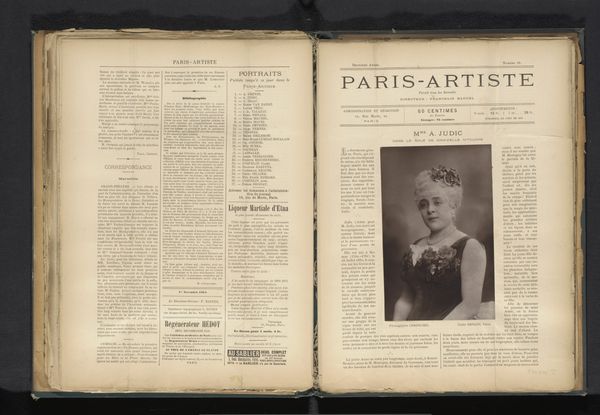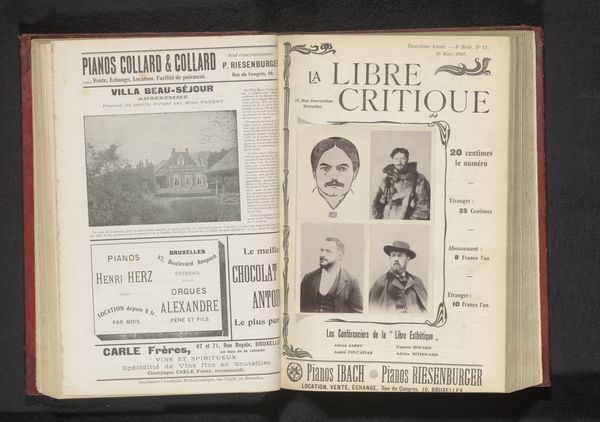
Dimensions: height 160 mm, width 120 mm
Copyright: Rijks Museum: Open Domain
Curator: The artwork before us is a fascinating lithograph dating to before 1894. It presents a portrait of Charles de Coster on the cover of "La Libre Critique". A. Dandoy is the listed artist. There is a photograph, though attributed to Neurdein, that is on the cover. What are your initial thoughts? Editor: I'm struck by the textural layering here—the lithograph itself attempting to capture the feel of a photograph. Then to find out that a photograph might have been involved with creating the portrait... It calls to question how such a magazine issue represents both material and cultural production. Curator: Indeed! The layered approach to the creation process provides multiple avenues to explore the social context of art creation. We can interrogate Neurdein's choice of using photography as a tool. De Coster, being featured in "La Libre Critique" situates him within the social, political and intellectual climate of the time. How do you read the decision to present De Coster's likeness as a lithograph based on a photographic print? Editor: It feels significant, given the era’s rapidly evolving technologies and their impact on representation. Lithography allows for broader distribution, connecting with the rising forces of mass production and media consumption. This portrait, likely made to publicize de Coster and his work, turns him into a marketable figure. Consider the material accessibility too; the magazine, priced at just 30 centimes. Curator: The fact that it's a "popular edition" really cements the democratizing role of art during that era, a portrait of an author is being rendered affordable for a larger segment of the populace. This image transforms de Coster's social persona into that of a public intellectual, a man for the masses, so to speak. I find it powerful how this publication captures that relationship between artist, audience, and social values. Editor: And considering that it includes other media forms, like F. Rop’s lithograph or an "autographe du Poète," underscores how materiality bridges creative disciplines. That all these methods are used in service of literary and art criticism provides a unique snapshot into media’s material capabilities as both communication and representation of that period. Curator: Precisely! By looking at this portrait within the context of this particular issue of the magazine, and with these print mediums at play, we reveal so much about that historical intersection of culture, production and distribution. Editor: Agreed. Thinking about its composite materiality deepens our understanding of art production and consumption in that period.
Comments
No comments
Be the first to comment and join the conversation on the ultimate creative platform.
